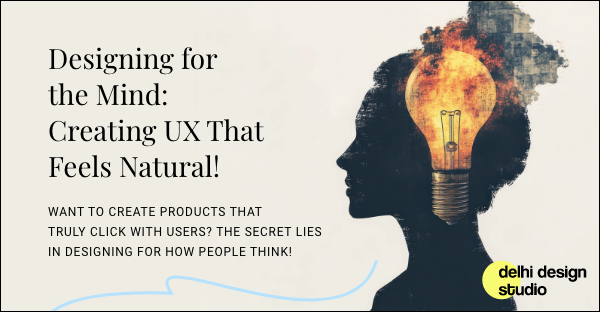
Designing for the Mind: Creating UX That Feels Natural!
1. The Motivating Mind: Understanding User Goals Every action a user takes is driven by motivation, whether conscious or subconscious. People interact with products to solve problems, achieve goals, or fulfill desires. Designers must tap into these motivations by:
• Identifying primary user needs and pain points
• Creating value-driven interfaces that emphasize benefits.
• Using emotional triggers, such as rewards or social validation, to enhance engagement.
2. The Exploring Mind: How Users Seek Information Users navigate digital experiences in search of information, whether to compare options, learn something new, or make decisions. Optimizing design for exploration involves:
• Providing clear navigation and intuitive information architecture.
• Ensuring search functionality is efficient and contextually relevant.
• Presenting information progressively to prevent cognitive overload.
3. The Social Mind: The Role of Influence in Decision-Making Humans are inherently social beings, and their decisions are often influenced by social proof, reviews, and community feedback. To leverage the power of the social mind:
• Incorporate testimonials, user ratings, and peer recommendations.
• Enable social sharing and collaboration within digital experiences.
• Design interactive experiences that foster a sense of belonging.
4. The Remembering Mind: Leveraging Memory for Usability Users rely on memory to navigate interfaces efficiently. Poor design can lead to frustration if users struggle to recall how a system works. Key principles for enhancing memory in design include:
• Consistency in UI elements and interactions
• Providing visual cues and recognizable patterns.
• Reducing reliance on short-term memory through auto-fill, suggestions, and saved preferences.
5. The Deciding Mind: Simplifying Choice Architecture Decision-making can be overwhelming when users face too many options. Cognitive overload leads to frustration and drop-offs. Effective design should:
• Limit choices to prevent decision fatigue.
• Use visual hierarchy to guide users toward key actions.
• Implement nudges such as defaults, recommendations, and filters to streamline decisions.
6. The Acting Mind: Designing for Real-Time Execution Once a decision is made, the transition from thought to action should be seamless. Good design facilitates quick and error-free execution by:
• Providing clear call-to-action buttons.
• Minimizing steps in the process.
• Offering immediate feedback for user actions (e.g., progress indicators, confirmation messages).
Boosting Business Growth 4x with Cognitive Science in Design
By aligning product design with cognitive processes, businesses can significantly accelerate growth and revenue. Here's how:
• Increased Conversion Rates: When users encounter intuitive and frictionless experiences, they are more likely to complete actions, leading to higher sales and engagement.
• Enhanced Customer Retention: Products that align with user thinking foster satisfaction and loyalty, reducing churn and increasing lifetime value.
• Better User Engagement: When designs resonate with natural human behavior, users spend more time on the platform, interact more, and advocate for the product.
• Optimized Decision-Making: Helping users make quicker and more confident choices reduces drop-offs and enhances user satisfaction, directly impacting business profitability.
My Thoughts:
Designing for how people think requires a deep understanding of cognitive processes and user behavior. By aligning digital experiences with natural thought patterns, businesses can create intuitive, user-friendly products that not only meet functional needs but also resonate on a deeper, psychological level. Whether designing a website, app, or digital tool, applying cognitive science principles will lead to better engagement, satisfaction, and long-term success. The result? A business that grows up to 4x faster through improved usability, retention, and customer satisfaction.
#UXDesign #CognitiveScience #BusinessGrowth #UserExperience #DesignThinking #DigitalTransformation #HumanCenteredDesign #GrowthHacking #Marketing #Innovation #UIUX #DesignThinking #WebDesign #Branding #Entrepreneurship #Startups